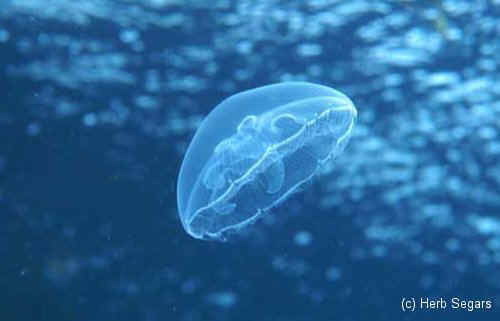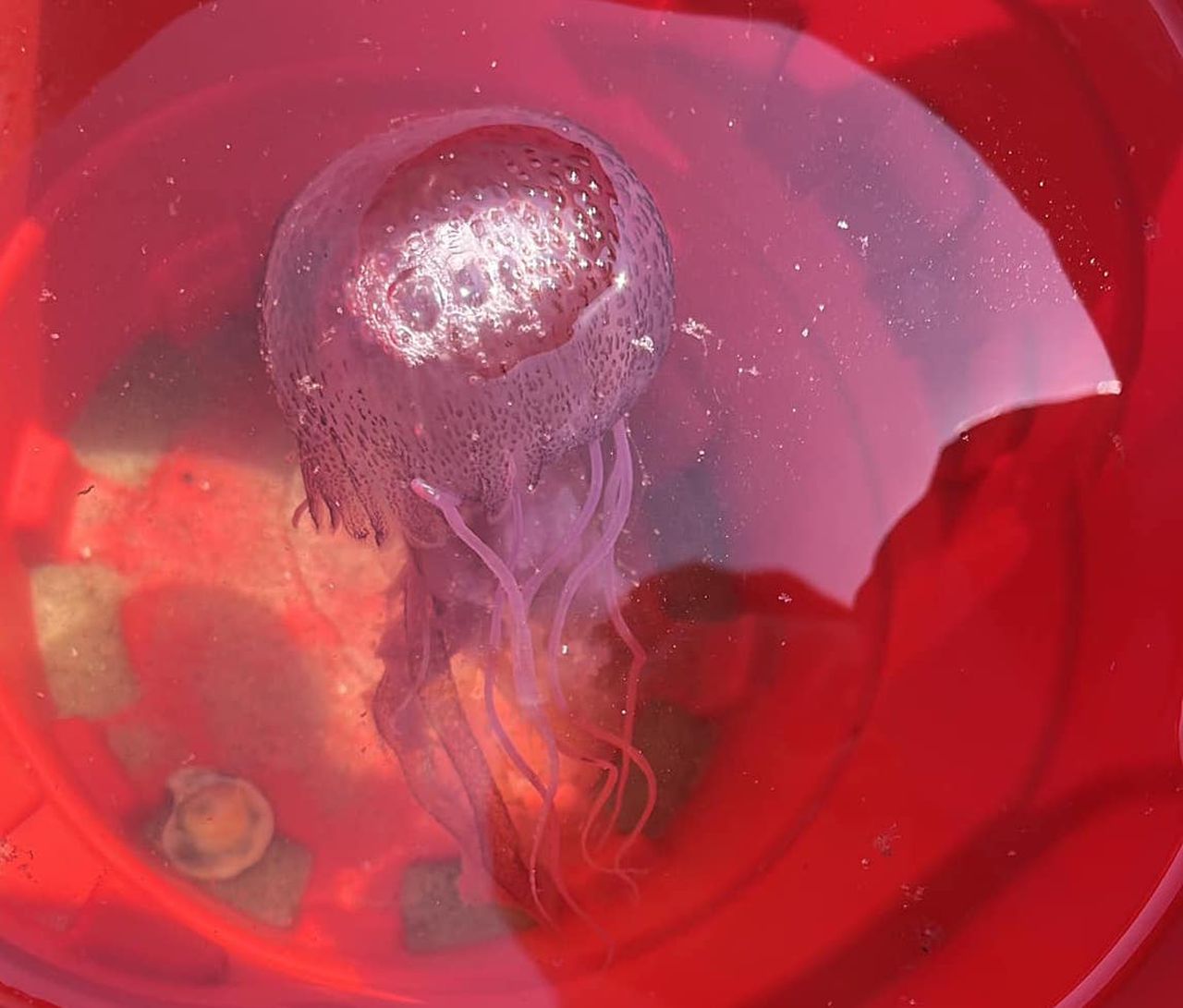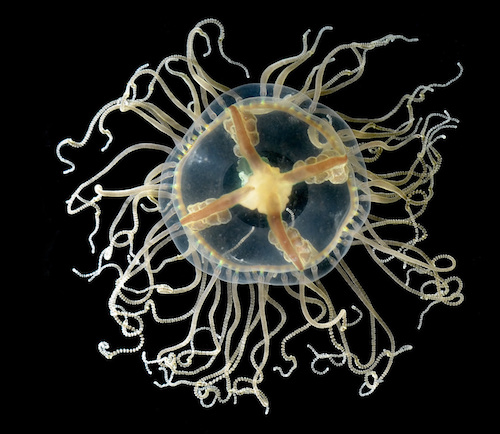True Jellyfishes
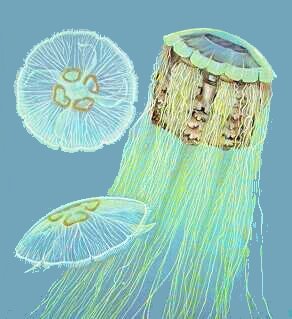
Red Jelly Cyanea capillata (right)
Jellyfishes are free-swimming relatives of corals, anemones, and hydroids. In fact, in many cases, they are the same species, just in a different stage of life! Not all medusas ( as jellyfishes are called ) have a corresponding polyp stage, and likewise, not all polyps have a corresponding medusa stage, but most alternate generations in each form. Small jellies ( up to 1" across ) are most likely the medusa stage of some hydroid, while large jellies are usually the dominant stage of a species in which the polyp stage is almost absent. Even anemones have a periodic medusa stage, although it is infrequently observed.
Although jellyfish can swim slowly, they are largely at the mercy of the tides and currents, and at times large numbers are concentrated into bays and may be stranded on beaches.
When jellyfish breed, they release tiny swimming embryos into the water, and the adults then probably die. The embryos attach themselves to fixed structures, and it would be well worth looking for them on the piles of piers, although they are only 1 or 2 cm long. They look a bit like tiny sea anemones for a long time, and feed and grow like this for a year, hanging downwards from a support. In their second winter they lose their tentacles, and their bodies elongate and gradually divide crosswise into a stack of little discs. Eventually, these break free one by one and swim away to grow into tiny jellyfish.

Inside the top of the bell, you can see four rounded masses, which are the gonads.

Translucent Moon Jellies are harmless and quite common. Red Jellies have a painful wasp-like sting but are usually much less common. And try as you might to avoid it, sooner or later every northern diver will get a stray tentacle draped across the face and lips - the only places exposed to attack.
Moon Jellyfish do not sting humans. The threadlike tentacles around the edge of the bell can sting, and may occasionally catch small swimming animals for food, but their stings - like minute harpoons fired by springs - are not powerful enough to pierce our thick skin. They feed mostly by trapping microscopic plankton in a film of mucus which flows over the surface of the bell and is picked off as it reaches the edges by the thick mouth tentacles underneath. They swim by pulsing the bell, pushing themselves slowly forwards through the water.
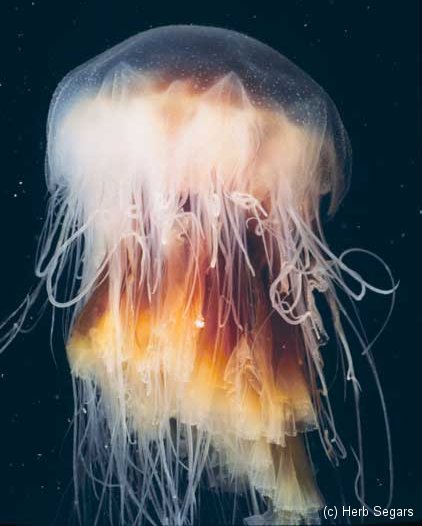
Avoid these
The Red or Lion's Mane Jellyfish has a bell reaching up to eight feet in diameter, and tentacles longer than a blue whale - up to 200 feet long. Juveniles are pink, turning red as they mature, becoming brownish-purple as adults. This jellyfish can cause severe stings, and there have been rare reports of fatalities to swimmers. In one of the Sherlock Holmes mysteries by Sir Arthur Conan Doyle, a Lion's Mane jellyfish is the killer. It is found from temperate waters to the Arctic.

Avoid these
The slightly stinging Purple Jellyfish has only a few catch tentacles trailing from its bell and five feeding tentacles surrounding its mouth. It can grow 40 cm across. When first discovered, this one glowed at night, presumably because it was feeding on sea spark dinoflagellates
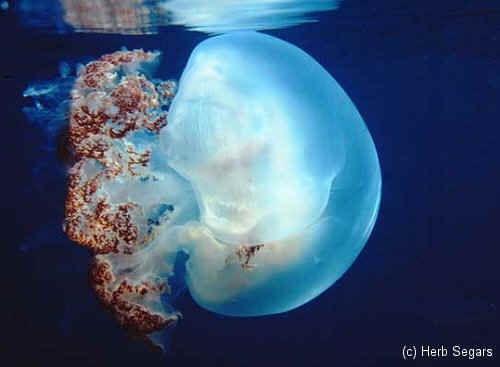
The Mushroom Cap Jellyfish has a deep swimming bell without tentacles on its margin. It is a creamy white color with darker markings on the sturdy central tentacle structures. It grows up to 20" in diameter and although it has long finger-like appendages hanging from its feeding apparatus. It is not hazardous to people.
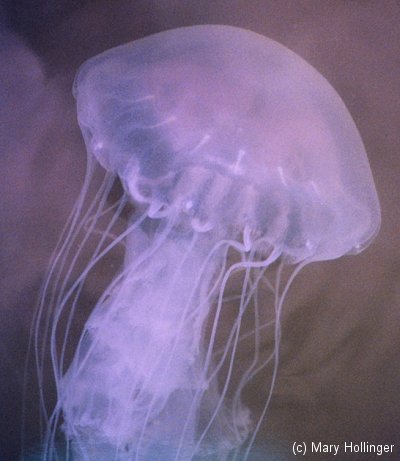
This is the estuarine form; the open sea form is larger and more colorful. The Sea Nettle has many more tentacles than the similar Purple Jellyfish.
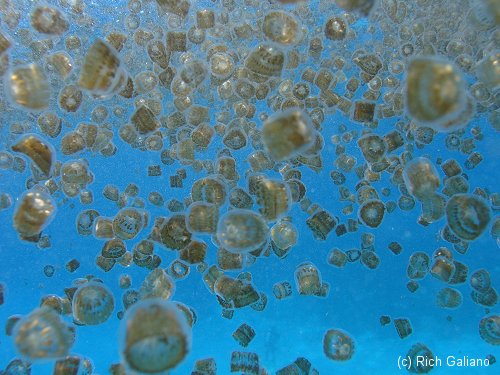
A little off-topic here, but these tiny tropical jellyfish and their pinhead-sized larvae, also known as "Sea Lice", are responsible for "Seabather's Eruption" - an uncomfortable itchy rash that sometimes has more serious complications. In northern waters, a similar illness is occasionally caused by the larvae of certain sea anemones. I had no idea at the time, and they didn't sting me at all.
- Seabather's Eruption


